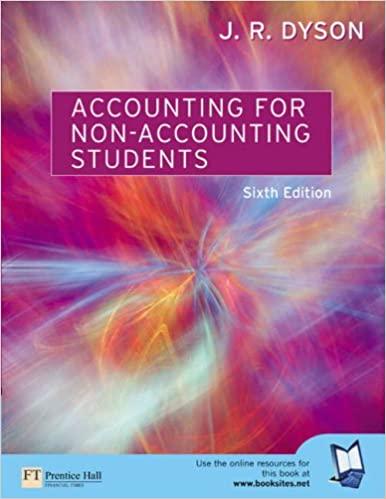Edgar Glennie recently retired from his job as an aircraft engineer. He is now living in Sidmouth
Question:
Edgar Glennie recently retired from his job as an aircraft engineer. He is now living in Sidmouth and he spends most of his time reading the financial press and reviewing his investments. Over recent months the company news was not good: profits were down, dividends were cut, and the accountancy profession was up to its neck in various types of scandals. One of Edgar’s investments was in Aggreko plc and he had read something in his local paper about the company that had made him a little concerned.
Aggreko had 40 years’ experience of providing portable power, temperature control and compressed air systems in countries around the world. The company had a very successful year to 31 December 2001. Group turnover increased by 16.6% and pre-tax profit by 10.4%.
Nevertheless, Edgar was still concerned. From his reading of the newspapers he was well aware of the importance of cash flow. He appreciated that, in order to survive in the long run, companies must make profits but in the short-run they needed enough cash to survive on a day-to-day basis.What was Aggreko’s cash position?
When he received his copy of Aggreko’s Annual Review for 2001 he turned to the
‘Consolidated Cash Flow Statement’ on pages 32 and 33 with great interest. Edgar was aware that ‘consolidated’ meant that the results for all Aggreko’s major investments in other companies were shown in one statement. The cash flow statement showed that the company’s cash had decreased by £0.5m in 2001 and by £6.2m in 2000. Edgar was very annoyed with himself for not spotting the negative cash flow the previous year, but it was too late to do anything about that now. At least the decrease in 2001 was less than the decrease in 2000.
When he checked the ‘Consolidated Profit and Loss Account’ on page 30, he noted that the company had made a profit on ordinary activities after taxation of £42.3m in 2001 compared with £38.6m in 2000. The ‘Consolidated Balance Sheet’ on page 31 showed that at 31 December 2001 the company had a cash and bank balance of £9.9m compared with £15.2m at 31 December 2000.
All of this seemed very odd to Edgar. What had happened? Could the company last for very much longer?
Note: Aggreko’s Consolidated Cash Flow Statement is shown in the Appendix below.
Required:
Explain how a figure for retained profit for the financial year of £28.1 million for the year to 31 December 2001 can still result in a decrease in cash of £0.5 million by the end of the year.
Step by Step Answer:






